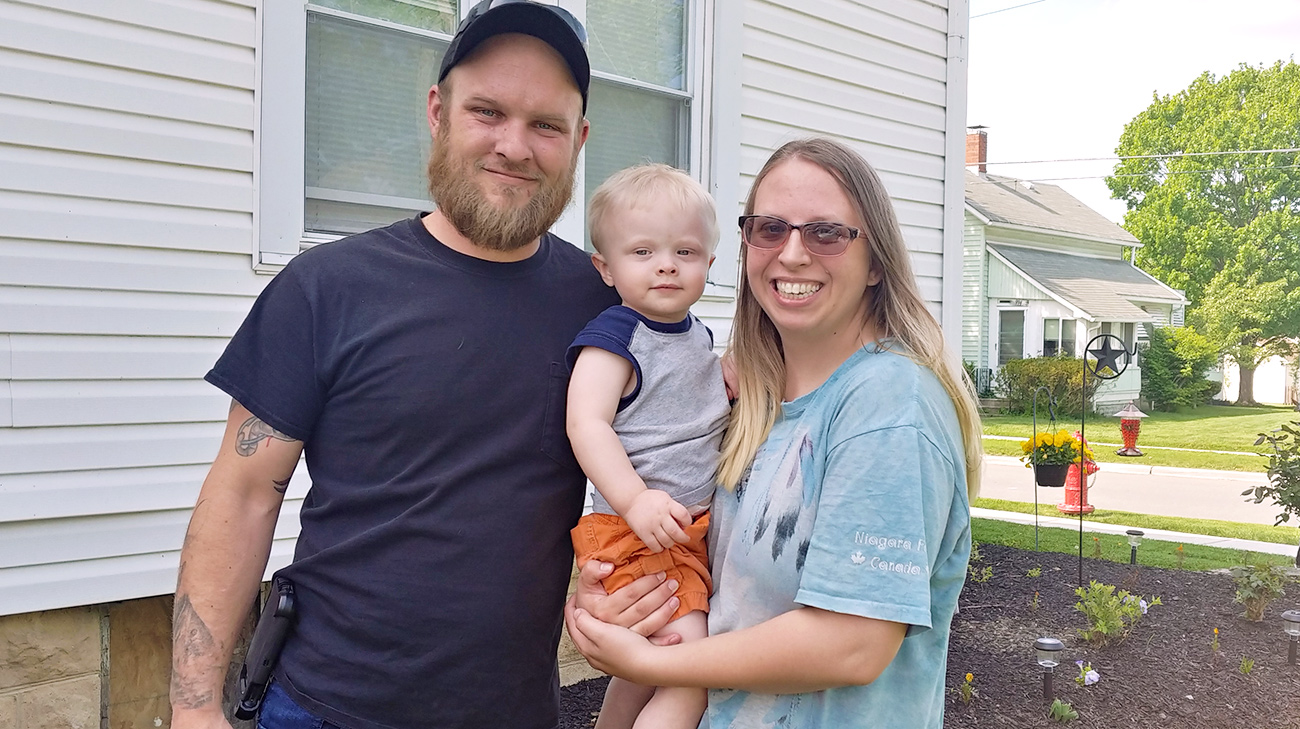
Ear issues have plagued Jessica Nonamaker her entire life – infections, continuous wax buildup, a perforated eardrum, surgeries. Always something. Her small ear canals seem to be the culprit of her problems.
Jessica, 29, from LaGrange, Ohio, had tubes put in multiple times as a child and regularly visits an ear, nose and throat doctor to, essentially, vacuum out the wax buildup in her ears. But, she continues to have ear issues.
About six years ago, Jessica began to experience vertigo – a sensation of feeling off balance or that the room is spinning – often caused from an inner ear problem. She was taught a series of head and body movements, called the Epley maneuver, and was prescribed ear drops to help relieve her symptoms and keep the vertigo at bay.
But over the years, the vertigo worsened and wearing a headset at work didn’t help the issue. Due to the COVID-19 pandemic, Jessica skipped her ear cleanings for a while. In February 2021, she decided it was time to have the wax buildup removed.
“For some reason that cleaning increased the intensity and severity of the vertigo and made me nauseous all the time. I was calling off of work a lot and spending most of the day in bed,” recalls Jessica.
As a wife and mother of a toddler, spending so much time in bed feeling nauseous and in pain wasn’t an option, so Jessica decided she needed to make an appointment with her neurologist who did some tests in the office and sent Jessica to get an MRI. The results didn’t show anything concerning. Jessica was referred to vestibular audiology – relating to inner ear and balance issues – at Cleveland Clinic.
Jessica had an evaluation in March that consisted of different tests; a vestibular test battery. The evaluation focused on her inner ear balance system and checked for any signs of involuntary eye movements called nystagmus. Video goggles were used to record her eye movements to see what could be causing her symptoms.
The inner ear system is made up of three semi-circular canals and two otolith organs. The vestibular test battery looked at the integrity of that system.
“Through objective testing, we found evidence of vestibular system asymmetry,” says Julie Honaker, PhD, CCC-A, an audiologist and Director of the Vestibular and Balance Disorders Program, Head and Neck Institute at Cleveland Clinic. “That means that there is a bias in Jessica’s visual and vestibular systems that caused the vertigo symptoms to elevate.”
And the solution was pretty simple. Dr. Honaker contacted a physical therapist at Cleveland Clinic Amherst Family Health Center and made recommendations for a physical therapy treatment program to account for the asymmetry and to help reduce her symptoms of dizziness.
“Different types of therapeutic head and body movements will greatly reduce Jessica’s symptoms,” says Dr. Honaker. “Jessica’s case showed a nice representation of the team approach to medicine we have at Cleveland Clinic. How different medical specialties can work together to help a patient.”
Jessica continues to go to physical therapy every other week and do therapy at home. Her vertigo and headaches have been greatly reduced. Jessica and her husband, Matt, are back to cooking dinner together at home and spending quality time as a family with their son, Bobby, going to the park or playing on the jungle gym.
“Because of the coordination of care between my neurologist, audiologist and physical therapist at Cleveland Clinic, I got much needed relief to help me get back to my normal life. Dr. Honaker was so helpful and kind; I’m so thankful I was able to get the help I needed.”
Related Institutes: Head & Neck Institute

